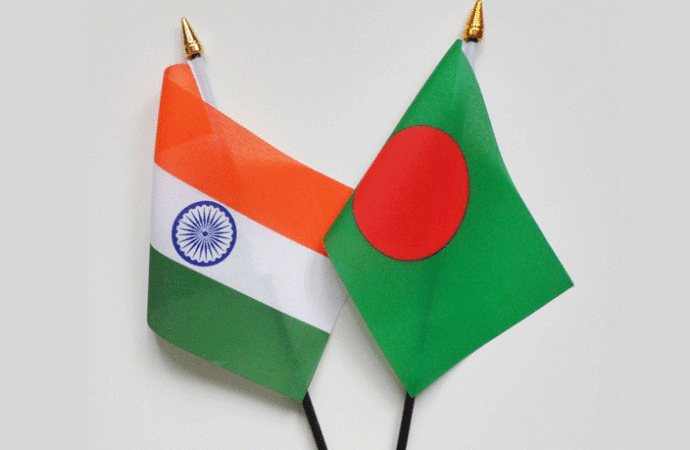Bangladesh’s rice imports fell to a nearly 40-year low in the fiscal year 2019-20 thanks to farmers’ endeavour to increase the yields of the main crop and allow the nation to be self-sufficient in the cereal production.
Total import was 4,180 tonnes in the last fiscal year, marking a 98 per cent slump over the previous fiscal year, resulting from high import tariffs and adequate domestic production, food ministry data showed.
Agricultural analysts attributed the gain to rising production amid farmers’ gradual shift to improved varieties and replacement of older varieties by the newer ones. And these were supported by favourable weather, better crop management and subsidies aimed at keeping the prices of fertilizers affordable for growers.
Annual rice output, which was less than 3 crore tonnes until the fiscal year 2007-08, crossed the mark in the subsequent year. Since then, upward trajectory continued except for the fiscal year 2016-17 when floods in the northeastern haor region damaged crops.
Production recovered a year later but encouraged by low import duty, private importers brought in 38.90 lakh tonnes of the cereal in FY2017-18, the highest in nearly three decades.
However, the Food and Agriculture Organisation, in a report in May, said the country was expected to have produced 3.87 crore tonnes of rice in FY2019-20. Bangladesh consumes 3.2 crore tonnes of rice and 55 lakh tonnes of wheat annually, said the UN agency in the report.
“No doubt, Bangladesh has made tremendous progress in rice production and food security,” said Humnath Bhandari, the representative for Bangladesh at the International Rice Research Institute, in an email reply recently.
“Rice production this year has been excellent mainly due to favourable weather conditions in boro and hoping good aman production (if no natural calamities) as a result of a good price of rice and government efforts to increase rice production.”
Farmers have been producing a higher amount of rice than the country’s annual requirement for the last several years.
“As a result, the country sees carryover stock every year,” said Md Shahjahan Kabir, director-general of the Bangladesh Rice Research Institute.
Rice production has grown by 600,000 tonnes annually since 2009 and the amount was higher than the annual increase in demand for rice by 3 lakh to 3.5 lakh tonnes owing to population growth.
“There is no need to think of import. We are producing more food than required,” Kabir said.
Aromatic rice used for festivals and at hotels and restaurants is mainly imported now.
Nearly 39 lakh tonnes of rice were imported in FY2018-19. There would have been no problem had there been no import of the staple grain, said Agriculture Secretary Md Nasiruzzaman.
“Figures show that we are not only self-sufficient, but we also produced a large surplus in FY2019-20,” said Subash Dasgupta, a former senior technical officer of the FAO.
“The major burning issue in this production is making the system sustainable. As of late, the current rice production system has become more unstable,” he said in an email reply.
Earlier, he said, the major concern of production instability was associated with the unpredictability of monsoon.
“However, in 2017, we witnessed production vulnerabilities in all three rice growing seasons — aus, aman and boro — which pose alarming consequences,” he said.
“A very important point to note is that the growth rate in rice production has been decelerating.”
For example, Dasgupta said, rice productivity rose by 2.3 per cent per annum in the first decade of the new millennium and slowed down to 0.87 per cent in the past decade from 2011 to 2019.
A rice self-sufficient country should have continuously increasing growth in rice productivity, alongside a competitive and stable production system, Dasgupta said.
Due to the current coronavirus pandemic, a significant percentage of the population will fall below the poverty line, resulting in increased rice consumption among them.
According to IRRI Representative Bhandari, there are challenges in future rice production such as flood, drought, salinity, cold and heat.
Agriculture Secretary Nasiruzzaman said the government has prepared a rice vision to produce enough to meet the national requirement by 2050.
The government targets to produce 5 crore tonnes of rice under the vision.
The vision lays out ways how the country will increase production in line with the population growth against the backdrop of a decline in farmland. “One of the ways would be to improve yield by variety replacement,” the secretary said.
The Rice Vision prepared by the BRRI in 2015 said the population of Bangladesh will reach 21.54 crore in 2050 when 4.46 crore tonnes of rice will be required.
The vision paper said several hurdles, such as increasing population, decreasing resources and rising climate vulnerability, can stand in the way of achieving the target.
Three major interventions — accelerating genetic gain, minimising yield gap and curtailing adoption lag — are proposed to break the barriers to achieve the target.
Major challenges facing the implementation of the interventions include shrinking net cropped area, scarcity of water for irrigation and increasing pressure on soil fertility, the paper said.
BRRI DG Kabir said various improved varieties of rice have been released in recent years. In-bred varieties capable of withstanding stresses such as drought, flood and salinity have also been released. “We have several draught-, flood- and salinity-tolerant rice seeds already in the field. We have replacement varieties of mega varieties,” he said, adding that the target has been set to attain 25-30 lakh tonnes of surplus rice.










